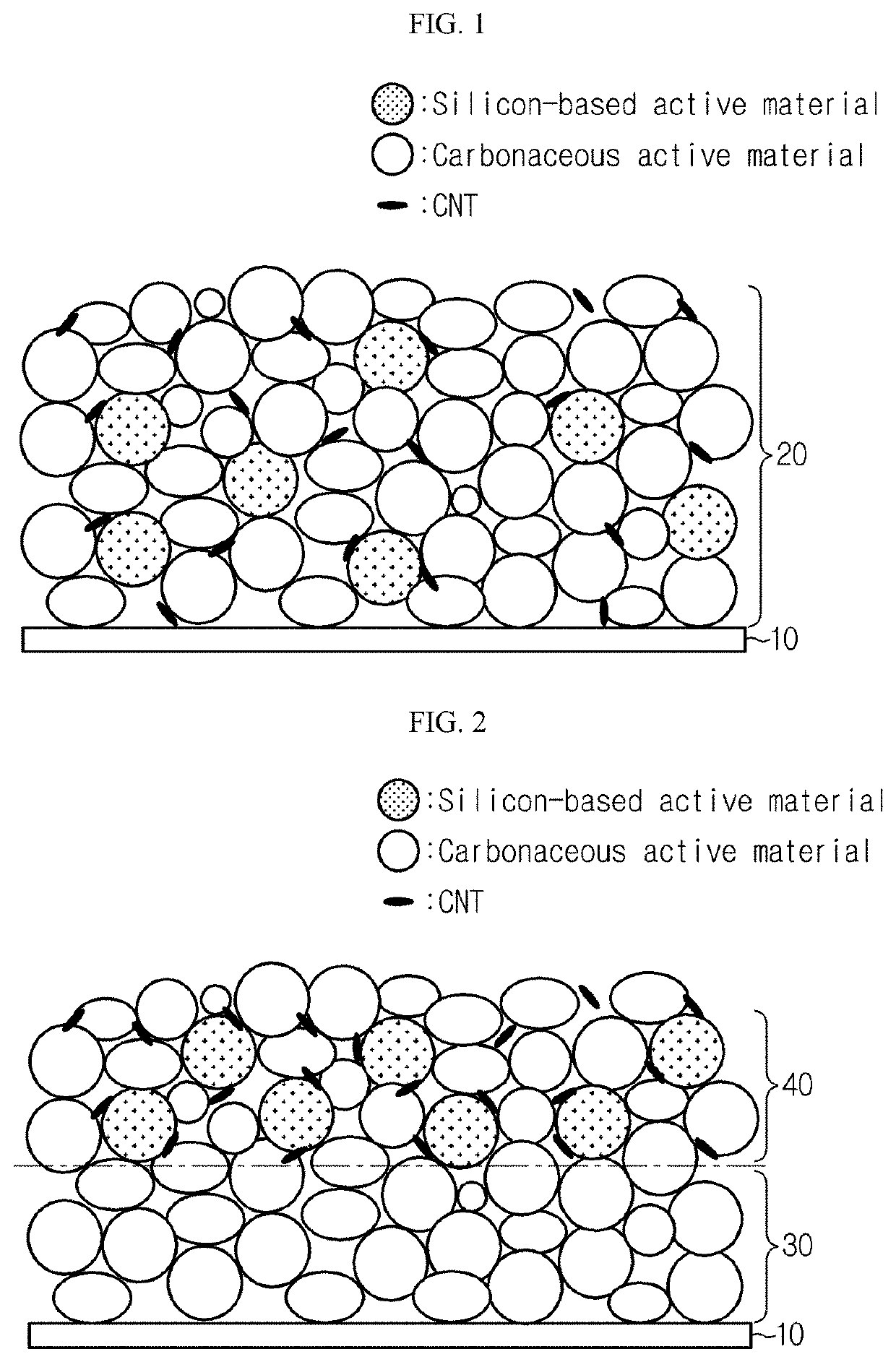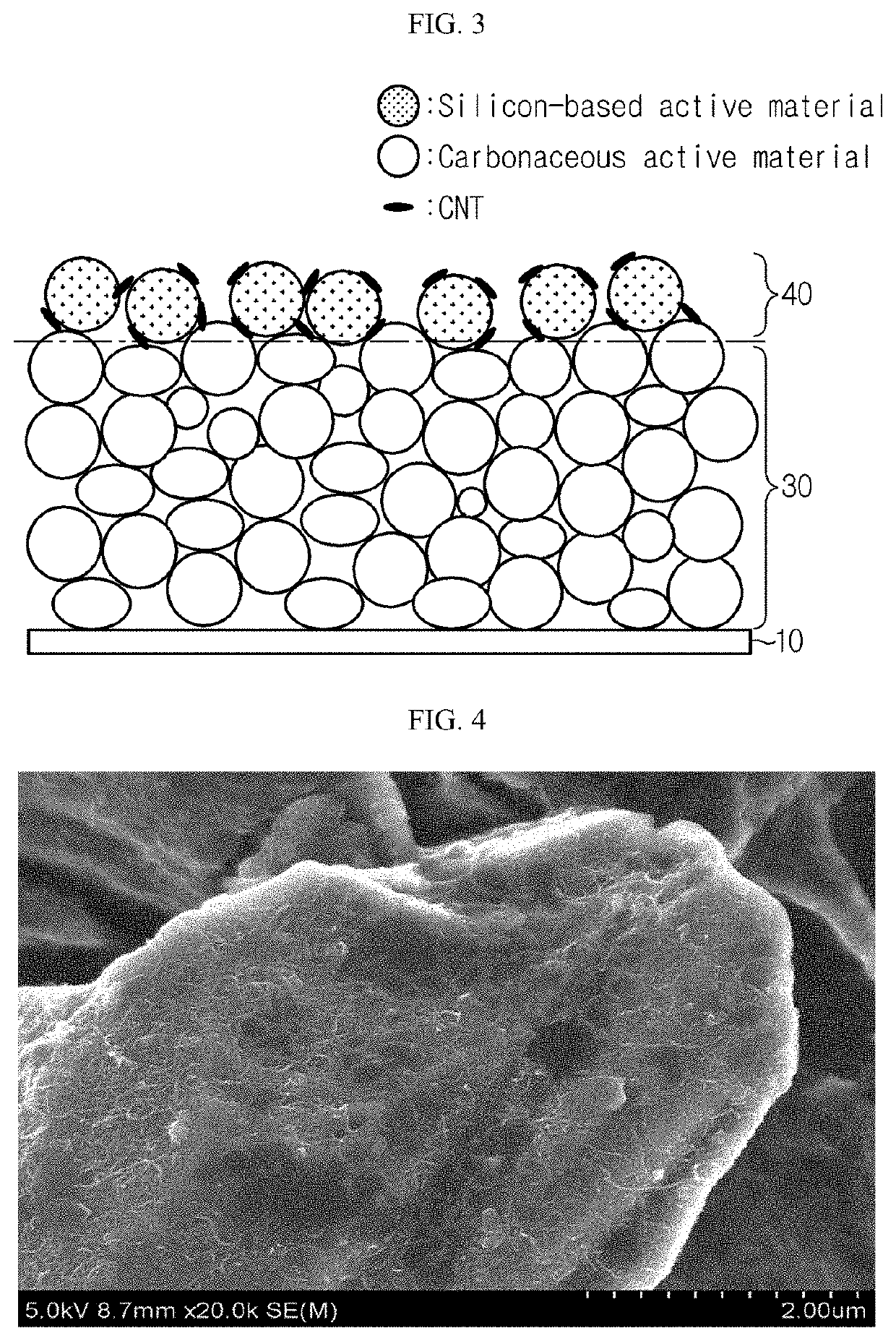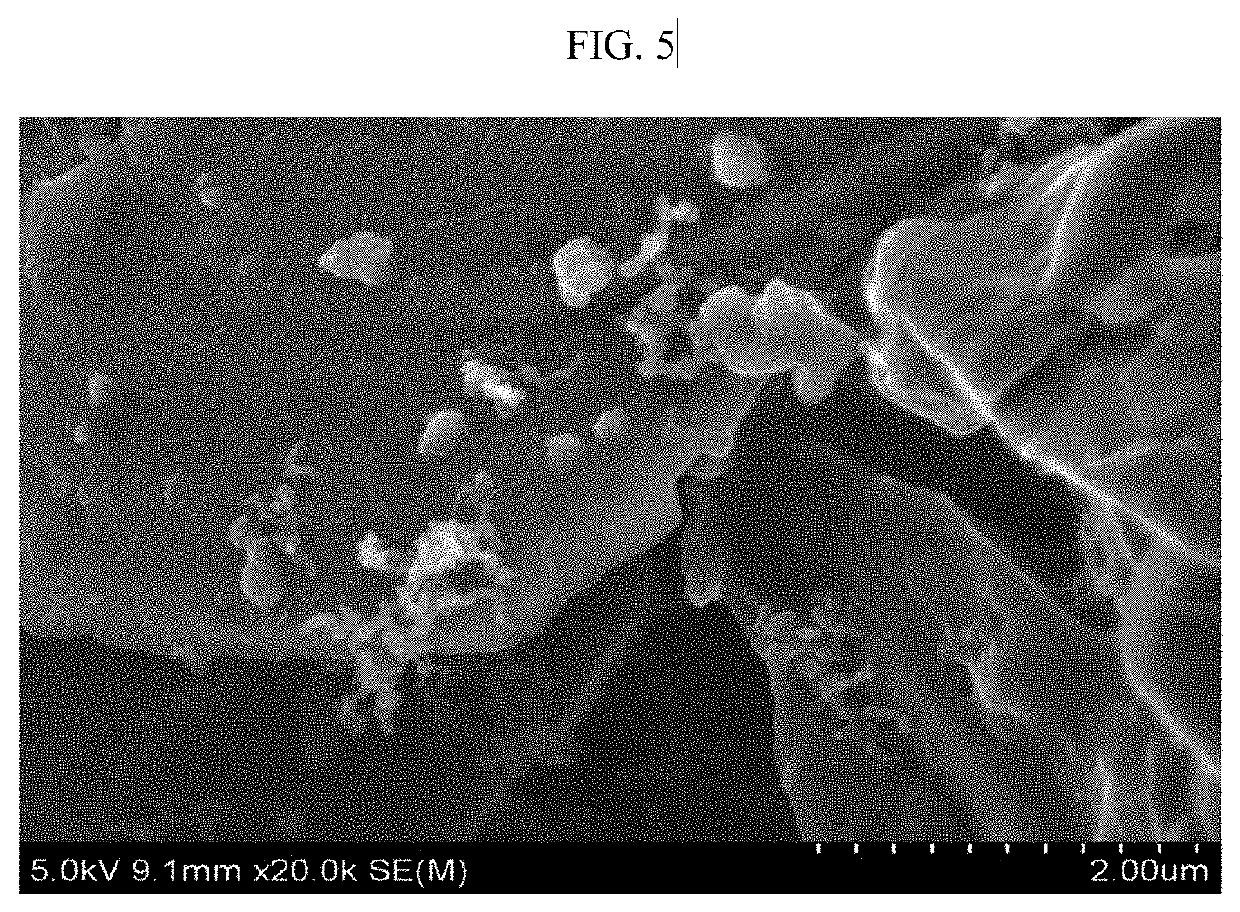Negative electrode and secondary battery including the same
a secondary battery and negative electrode technology, applied in the field of negative electrodes, can solve the problems of low charge/discharge efficiency of 80% of silicon-based materials, lower than the charge/discharge efficiency (92%), and cannot function as active materials, so as to maximize the advantages of carbon nanotubes as conductive materials, improve cycle characteristics, and inhibit the degradation of discharge capacity
- Summary
- Abstract
- Description
- Claims
- Application Information
AI Technical Summary
Benefits of technology
Problems solved by technology
Method used
Image
Examples
example 2
[0108]
[0109]A negative electrode having a thickness of 80 μm was obtained in the same manner as described in Example 1, except that the slurry for the second active material layer was prepared by using 1 part by weight of carbon black and 0.3 parts by weight of carbon nanotubes (CNT) as a conductive material. In other words, the active material, binder polymer, carbon black and carbon nanotubes (CNT) were used at a weight ratio of 95:3.5:1.2:0.3, wherein the weight ratio of the carbonaceous active material and the silicon-based active material was 9:1 in the active material.
[0110]
[0111]A lithium secondary battery was obtained in the same manner as described in Example 1, except that the negative electrode obtained as described above was used.
PUM
| Property | Measurement | Unit |
|---|---|---|
| length | aaaaa | aaaaa |
| diameter | aaaaa | aaaaa |
| charge/discharge efficiency | aaaaa | aaaaa |
Abstract
Description
Claims
Application Information
 Login to View More
Login to View More - R&D
- Intellectual Property
- Life Sciences
- Materials
- Tech Scout
- Unparalleled Data Quality
- Higher Quality Content
- 60% Fewer Hallucinations
Browse by: Latest US Patents, China's latest patents, Technical Efficacy Thesaurus, Application Domain, Technology Topic, Popular Technical Reports.
© 2025 PatSnap. All rights reserved.Legal|Privacy policy|Modern Slavery Act Transparency Statement|Sitemap|About US| Contact US: help@patsnap.com



